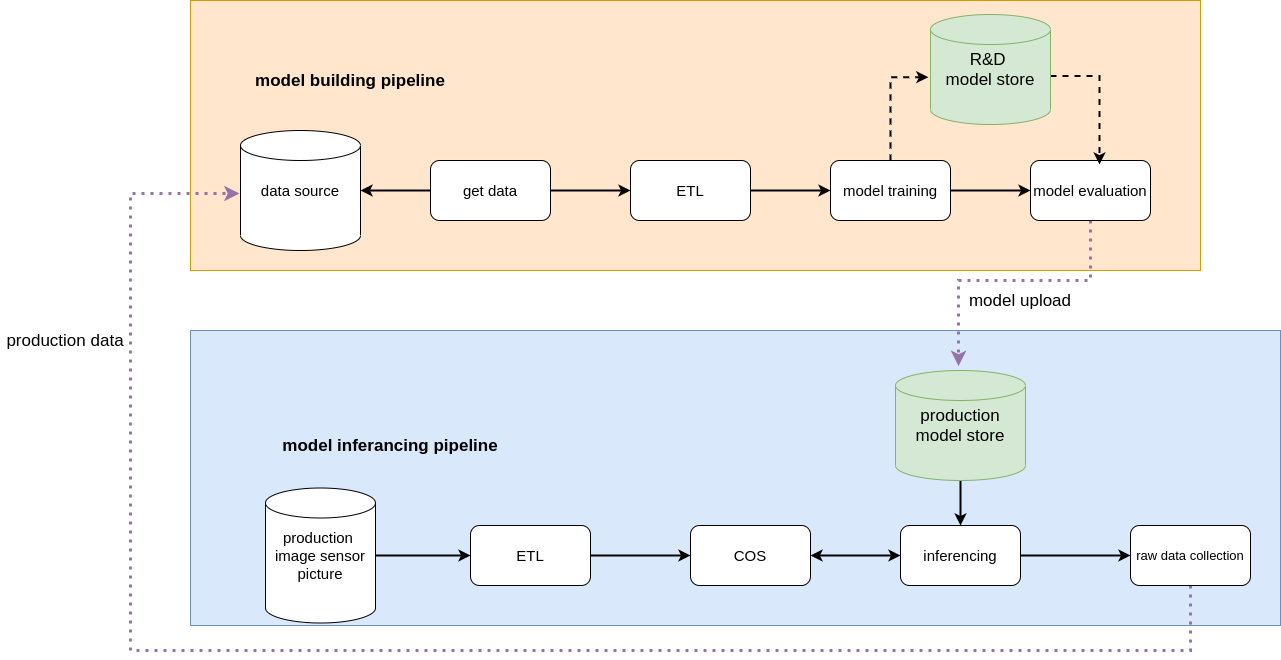mlops pipeline for mnist data
There are 4 steps in the model building or training phase
In this stage we will download the mnist data from mnist.npz and save the mnist.npz file
in this stage we will extract the data from mnist.npz file with split of data for training and testing , starting 59000 dataset is used for training, the range of pixel value is 0 to 255. Normalization of dataset is applied for making the pixel value to range between 0 to 1
here were have created 2 model architecture, one with CNN and one without CNN, we traing both the model using the training data created in ETL stage, and save the model which is created in RD model store
we can increase the epos, batch_size and learning rate by seting the below parameter
env variable: epochs takes int value, batch_size takes int value, learning_rate takes float value
Model: "mnist_without_CNN"
_________________________________________________________________
Layer (type) Output Shape Param #
=================================================================
flatten (Flatten) (None, 784) 0
_________________________________________________________________
dense (Dense) (None, 128) 100480
_________________________________________________________________
dense_1 (Dense) (None, 128) 16512
_________________________________________________________________
dense_2 (Dense) (None, 10) 1290
=================================================================
Total params: 118,282
Trainable params: 118,282
Non-trainable params: 0
Model: "sequential"
_________________________________________________________________
Layer (type) Output Shape Param #
=================================================================
conv2d (Conv2D) (None, 26, 26, 32) 320
_________________________________________________________________
max_pooling2d (MaxPooling2D) (None, 13, 13, 32) 0
_________________________________________________________________
conv2d_1 (Conv2D) (None, 11, 11, 64) 18496
_________________________________________________________________
max_pooling2d_1 (MaxPooling2 (None, 5, 5, 64) 0
_________________________________________________________________
flatten (Flatten) (None, 1600) 0
_________________________________________________________________
dropout (Dropout) (None, 1600) 0
_________________________________________________________________
dense (Dense) (None, 10) 16010
=================================================================
Total params: 34,826
Trainable params: 34,826
Non-trainable params: 0
this stage we evaluated all the model present in RDmodelstore using testdata obtained in Etl state, F1 score is obtained for all models and compared and evaluated. Model with great f1 score will be selected and uploaded to production modelstore
minimum f1 score for model evaluation is setting min_f1_score env which takes floting values
There are 4 steps in the model building or training phase
In this stage we are simulating the data from image sensor and store the image in png
In this stage we will get image(png) from previous step of image sensor, the range of pixel value is 0 to 255. Normalization of dataset is applied for making the pixel value to range between 0 to 1 and ndarry is stored for prediction
COS(cooridation service) is used to send the data for prediction and obtain the result from inferancing model
this stage will take model from prod_model_store and expose api for prediction, takes ndarray of image as input and respond with prediction
this stage we store the real time image (ndarray) for furture Continues training. The result will be without label. manual operation Domain expert need to label the image and package it and upload to RD data source
follow the below steps to simulate pipeline for dev env and production env
- start the lister
python3 start_listener.sh
- start the trainig process
python3 train_execution.sh
- for inferancing, start the production process
python3 production_execution.sh
Using the production data we can start the Continues-traing / trasfer-learning by manually labelling the data and uploading the data to datastore of dev env
- for copying of production data and labeling is manual operation, assuming the labeled data is ready and ready for continues training
python3 production_data_copy.sh
- for starting continues training
python3 CT.sh
the process of training and inferancing of Model continues repeatatively
follow step 2 and 3 in execution steps for training and inferance of model and then Continues training
Note: its prefered to use docker as all the prerequired library will be install as part of docker build.
for building the docker , clone the repo and run the below cmd
docker build --tag mnistpiple:v1 .
docker run -it mnistpiple:v1 bash
cd /bd_build/
follow the steps mentioned at execution steps for training and inferance of model
Note: testing was done on linus discribution of fedora and centos

